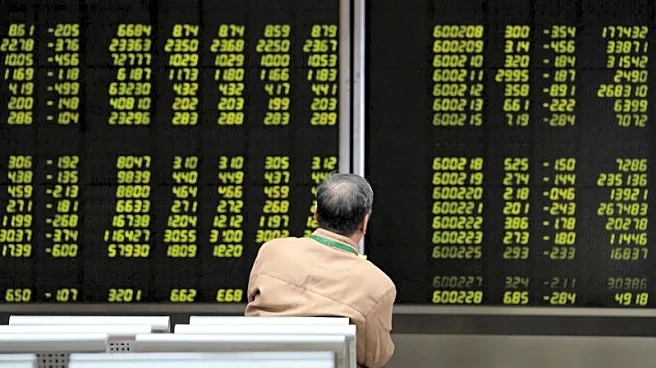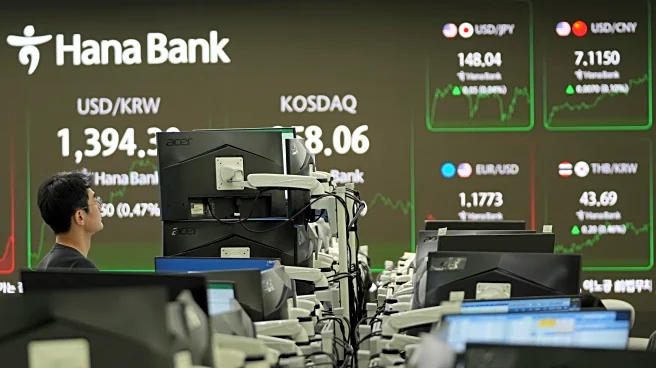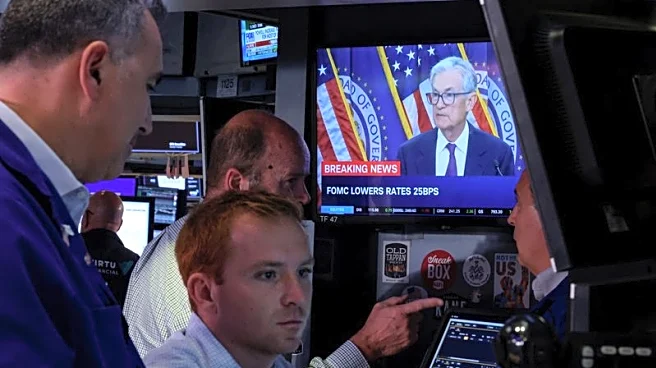What's Happening?
The U.S. Federal Reserve has cut interest rates by a quarter of a percentage point, marking the first reduction since December. This decision has led to Wall Street reaching record highs, although futures indicate a steady opening. The rate cut is part of a broader trend, with Norway and Canada also reducing rates. Despite the positive impact on U.S. stocks, the Nikkei index in Asia retreated following the Bank of Japan's indication of unwinding stimulus policies. The MSCI World Equity index showed a slight decline, while the pan-European STOXX 600 remained flat. Investors are optimistic that these central bank actions will continue to boost stock markets, although the Fed has not committed to a series of rate cuts, opting for a data-dependent approach.
Why It's Important?
The Federal Reserve's rate cut is significant as it influences global financial markets and investor sentiment. Lower interest rates typically encourage borrowing and investment, potentially boosting economic activity. However, the Fed's cautious approach suggests uncertainty about future economic conditions. The rate cut impacts various sectors, including oil and gold markets, with oil prices declining due to demand concerns and gold prices rising for the fifth consecutive week. The decision also affects currency markets, with the U.S. dollar slightly higher and the yen experiencing fluctuations. The broader implications include potential shifts in investment strategies and economic forecasts, as stakeholders assess the impact of central bank policies on growth and inflation.
What's Next?
Market participants are closely monitoring potential developments, including a call between Chinese President Xi Jinping and President Trump, which could address trade issues and the TikTok deal. The Fed's meeting-by-meeting approach means future rate decisions will depend on economic data, creating uncertainty for investors. Additionally, the Bank of England's decision to hold rates steady while slowing bond sales adds complexity to the global financial landscape. Investors may adjust portfolios based on anticipated volatility and central bank actions, with a focus on equities and risk management strategies.
Beyond the Headlines
The disconnect between record global share prices and bond market signals raises concerns about government debt and financial stability. The Bank for International Settlements has highlighted this issue, suggesting potential risks for long-term economic health. As central banks navigate these challenges, the balance between stimulating growth and managing debt becomes increasingly critical. The evolving dynamics may influence policy decisions and investor confidence, with implications for fiscal strategies and international cooperation.












